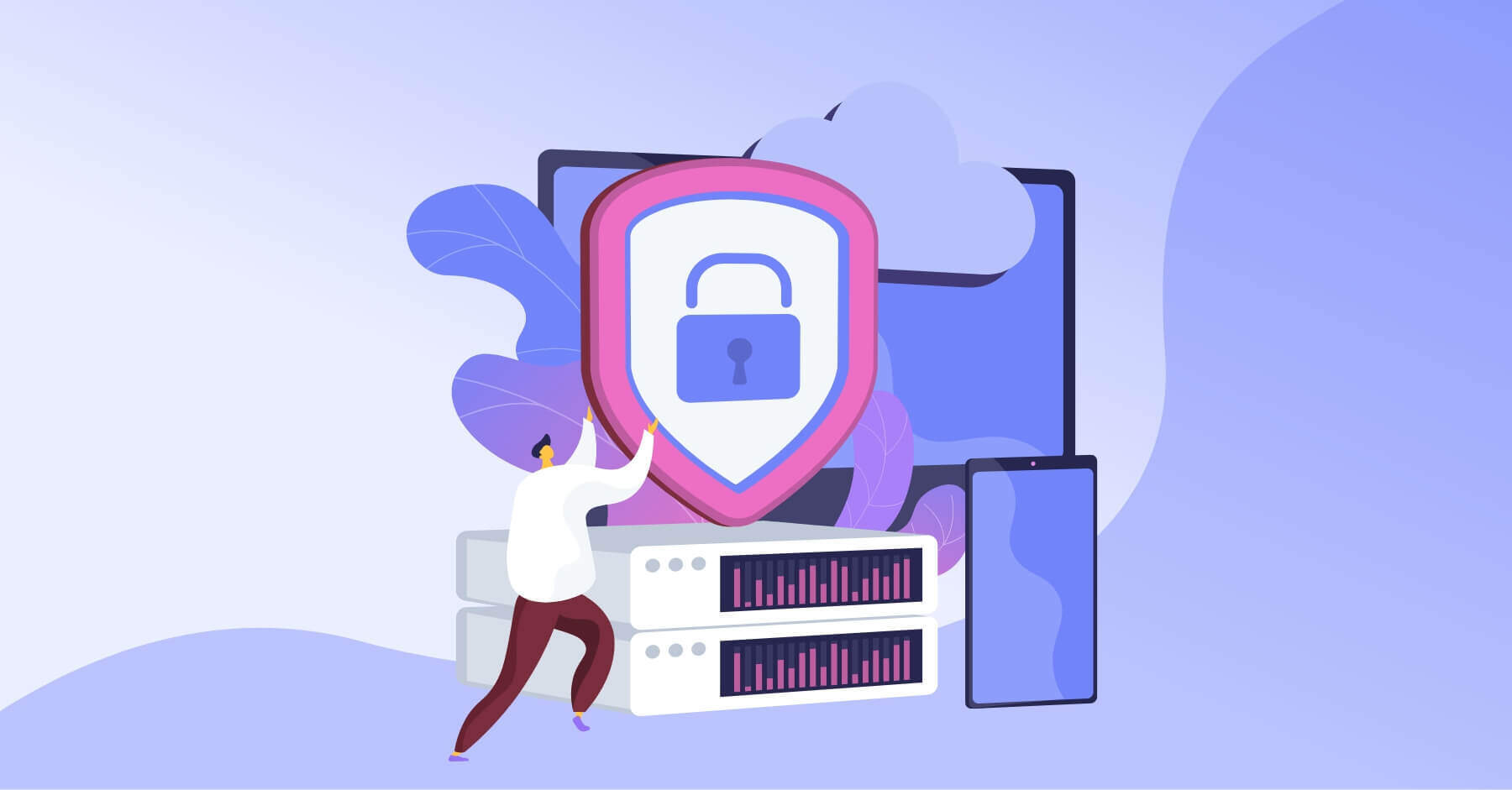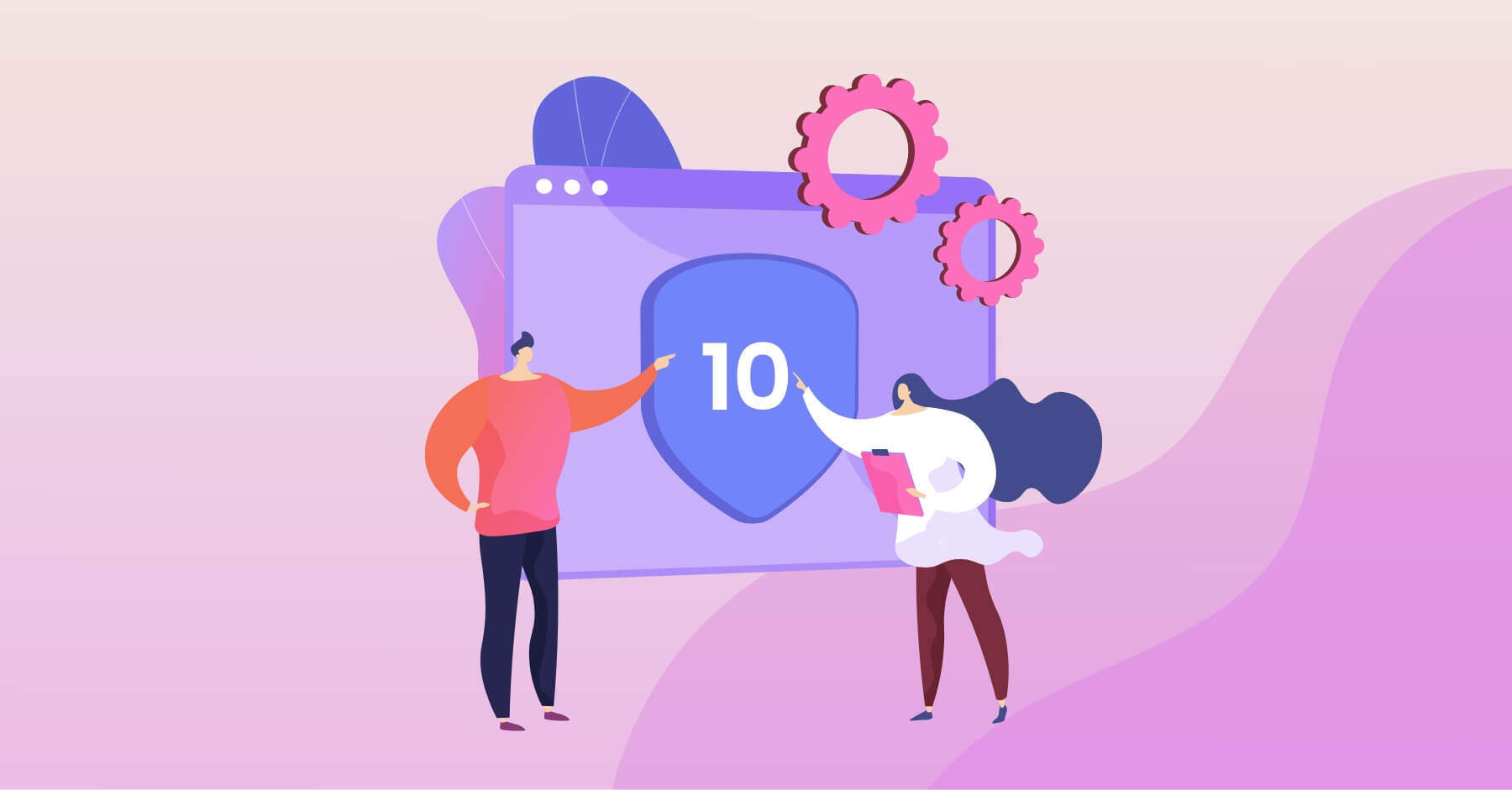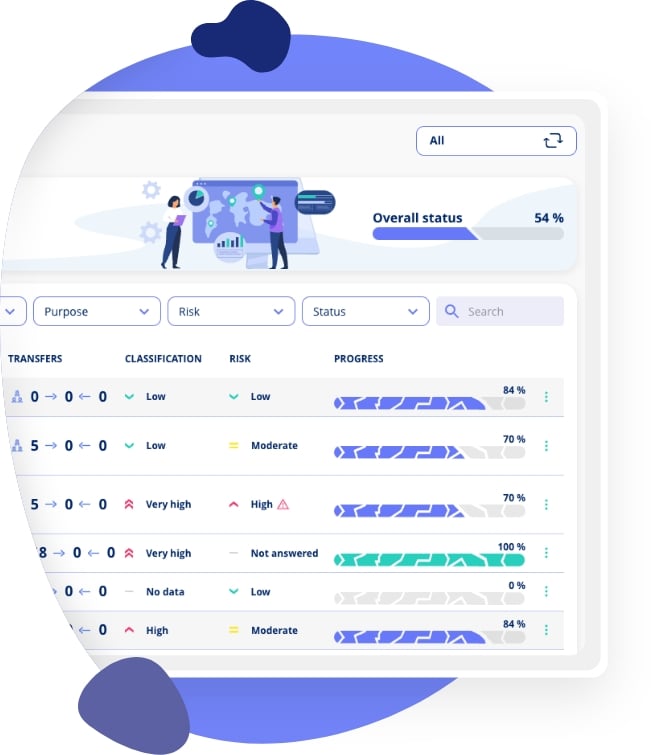
What is GDPR Compliance Software? Definition & Overview
It is a common practice for organisations to use software to support their GDPR compliance.
-
Article 1 of 4 in our "GDPR compliance software" series.
- Articles
- Compliance
- A Deep Dive into GDPR Compliance Software
The Challenges of Being GDPR Compliant
Anyone who has been involved in preparing an organisation to be GDPR compliant will know that it is challenging.
The GDPR has many requirements which demand significant changes to your organisation's working methods. At the same time, these requirements can be challenging to define and interpret for untrained colleagues new to GDPR and compliance.
As the person in charge of GDPR compliance, you must establish how your organisation will ensure compliance with the GDPR. This task will impact various aspects of the organisation's workflows, and your colleagues may resist these requirements as they affect their jobs and performance.
Your colleagues will need clear guidance from you on how the organisation adapts to the GDPR requirements, which puts you on the spot.
Changing an organisation's workflow can be challenging and costly. To make changes effective from a business perspective, it makes sense to monitor resource management when implementing the GDPR.
Every bit of added clarity you have on achieving GDPR compliance will have positive ripple effects across your organisation and will help your organisation comply fully and in a business-oriented manner.
It should be noted that documentation is an important part of GDPR compliance. Still, the primary purpose and benefit will accrue to the real-life changes to the organisation's safe processing of personal data.
The ideal level of GDPR compliance is achieved when documentation is transparent, accessible, and supportive of your organisation's day-to-day compliance.
Learn what GRC is and how governance, risk and compliance work together
What is GDPR Compliance Software?
In its simplest form, GDPR compliance software is a category name for software that helps you become GDPR compliant and continuously manage compliance.
Documentation is often considered the cornerstone of GDPR compliance, but it's just one piece of the puzzle. The real challenge lies in aligning business processes and systems with GDPR requirements and making them accessible to your colleagues for effective collaboration.
The GDPR software should help you achieve this.
Centralising your GDPR compliance efforts within a single software solution can be beneficial. This approach ensures that all documentation, tasks, and collaboration occur within one platform.
When all communication and collaboration are done through the GDPR compliance software, it fosters clear communication with your colleagues. Moreover, it eases the burden on you as the compliance manager, as the software offers a structured and predefined approach to achieving GDPR compliance. By following the software's established procedures and filling in the required details, your organisation can eliminate uncertainty in your journey of GDPR compliance.
See the concrete differences between GDPR documentation in Excel and a dedicated platform.
Different Organisations, Different Needs.
The size and complexity of your organisation will influence the optimal choice of GDPR compliance software.
In a small business, it makes sense to look for cost-effective, intuitive solutions that offer essential GDPR functions like data mapping and record-keeping.
In a startup, you would have needs similar to those of a small business, but you should consider picking software that scales with growth.
In a medium-sized business, you would still benefit from choosing user-friendly software enhanced with multi-user and task management features, which would enable you to handle more complex workflows.
An enterprise-sized business with multiple facilities and international operations faces complicated compliance challenges. If you manage compliance in such companies, you benefit from a comprehensive software solution to manage multiple records of processing activities across various jurisdictions.
In the public sector, you should emphasise secure software that includes user management capabilities, logging, and other features. This helps meet stringent accountability standards and ensures adherence to transparency laws.
You can read more about this and whether you really need GDPR software here.
Features of GDPR compliance software
The software's features are obviously important. They should align with your organisation's specific needs, and you need to ensure this since all providers are different and have different ways of shaping their software and features.
Your GDPR compliance software should definitely have features for mapping and documenting your data flows because effective data mapping is at the heart of GDPR compliance.
Moreover, the capability to evaluate your compliance efforts from different perspectives, whether by system, process, or organisational structure, helps maintain a comprehensive and adaptable approach to meeting regulatory demands.
Opting for software that can evolve alongside your organisation's changing requirements is also wise. While GDPR compliance may be your immediate focus, the software should ideally have the capacity to extend into other compliance areas such as ISO27001 or NIS2. This flexibility can streamline your processes and enable you to manage multiple compliance obligations within a single platform.
In this article, we explore what we believe are the most important features of GDPR compliance software.
Before buying GDPR compliance software
Features are important, but they shouldn’t be the sole focus of your due diligence.
Do your research on the company behind the software, its compliance, customer satisfaction, ease of onboarding, support level, and how pricing might evolve with your needs.
These factors will significantly impact the business case of the chosen software, and you can read about them in our guide to buying GDPR compliance software.
GDPR Software Categories
GDPR compliance software, as the topic so far, would often be considered to fit the umbrella category of GRC software (Governance, Risk, and Compliance).
Software can also help with GDPR compliance in ways that don't fall under the GRC category. This section will explore other software solutions that may interest your organisation's compliance efforts.
Effective data mapping is the foundation of GDPR compliance.
Cookie Consent Management
Websites that store cookies in a user's browser must obtain explicit consent from the user. This process of granting or revoking consent should be straightforward, ensuring that users can easily manage their preferences.
Cloud-based software solutions are commonly used to streamline cookie consent management. These solutions typically employ pop-up forms, allowing users to grant or withdraw consent directly on the website. This provides a user-friendly way to manage cookie preferences.
Software specifically designed for this purpose is referred to as cookie consent management software.
Data Subject Access Request
According to the GDPR, data subjects are granted the right to access the personal information processed by an organisation.
Complying with such access requests can be a significant task, especially for organisations processing the personal data of hundreds of thousands of people. The stringent rules on the matter do not make this easier.
Software has been developed to simplify the process of facilitating data subject access requests. It is commonly known as data subject access request software, or DSAR software for short.
Learn more about data subject rights under GDPR.
Website Scanning
A website should secure its users and inform them of how their information is processed; there are requirements and best practices for doing so. A website scanner can check if your website adheres to these standards.
The scanner verifies the presence of essential documents like a privacy policy and a cookie policy. Additionally, it checks whether your website uses secure protocols, such as HTTPS and TLS, to protect information during transmission between the web server and users' devices.
It also checks if your site uses DNSSEC, a technology that prevents attackers from redirecting visitors to fake websites.
Vendor Management Software
An often-forgotten but significant task of the GDPR is to audit your data processors’ compliance with your data processing agreements.
You should perform these audits regularly according to your risk assessments of the data processors.
Vendor management software can easily streamline and support your audit processes or even automate them entirely.
This software category aids in auditing and managing data protection agreements with third parties, which enhances your overall compliance and data security posture.
Read more about auditing data processors and vendor compliance.
Data Discovery
Data discovery involves identifying and classifying data within an organisation's systems, which helps pinpoint where data resides, whether in databases, files, etc.
Beyond merely locating data, it also classifies data sensitivity, making it useful for enforcing data protection policies.
Data discovery is helpful for a company's broader data governance strategy, whether for compliance, security, or optimisation. It ensures that data is stored efficiently and handled according to regulatory requirements and internal best practices.
Content Filtering
Content filtering helps prevent the inappropriate sharing of sensitive information, such as social security numbers.
It works by monitoring and controlling data transmission through communication channels such as email and messaging. It scans outgoing and incoming communications to detect and block any non-compliant data usage based on adherence to your organisational data protection policies.
Content filtering software helps you maintain compliance with organisational data protection standards. It is also very useful in preventing data breaches and unauthorised data sharing in real-time, as it will simply deny users from sharing data that matches your custom filters.
Summary
Using GDPR compliance software is a strategic decision that helps organisations manage their compliance efforts more effectively. It centralises documentation, streamlines processes, and enhances collaboration, making it easier to meet GDPR requirements.
Selecting the right software depends on your organisation's specific needs, whether it's basic data mapping for small businesses or comprehensive, multi-jurisdictional management for large enterprises.
Since you'll be using this software for the foreseeable future, investing time in thorough research and evaluation will be well worth it.
If you're considering implementing GDPR in your organisation, read our 10-step guide to implementing GDPR
Do you ever wonder: Should you build your own compliance software or buy a ready-made solution? You can read our guide on that topic here.
FAQ: Everything You Need to Know About GDPR Compliance Software
What is GDPR compliance software?
GDPR compliance software is a specialised platform that helps organisations achieve and maintain GDPR compliance. The software centralises documentation, task management, and collaboration in one place, making it easier to handle complex GDPR requirements. The best solutions offer features like data mapping, records of processing activities (ROPA), risk assessments, and automated workflows.
Explore .legal's GDPR compliance software
What features should GDPR software have as a minimum?
Effective GDPR software should offer at minimum:
- Data mapping for mapping data flows and systems
- Records of processing activities (ROPA) to document processing activities
- Risk assessment tools to identify and manage risks
- Task management to track compliance tasks
- Collaboration features to involve relevant colleagues
- Reporting for management reports and regulatory documentation
Modern platforms also offer integration with other compliance standards like ISO27001 and NIS2.
See the 10 key features in GDPR software
How much does GDPR compliance software typically cost?
Pricing varies significantly based on company size and functionality:
- Small businesses (1-50 employees): £40-150/month for basic features
- Medium-sized businesses (50-250 employees): £150-400/month with advanced features
- Large enterprises (250+ employees): £400-1,200+ monthly for enterprise solutions
Many providers offer scalable pricing models and free trial periods.
See .legal's pricing
Can small businesses use GDPR compliance software?
Absolutely! GDPR applies to all businesses that process personal data, regardless of size. Small businesses can actually gain significant value from GDPR software because it:
- Simplifies complex compliance requirements
- Saves time compared to manual processes in Excel
- Reduces the risk of errors and non-compliance
- Offers structured workflows and templates
Many providers offer cost-effective solutions tailored to small business needs.
Read about GDPR in Excel vs. Software
What's the difference between GDPR software and GRC software?
GDPR software focuses specifically on data protection and GDPR compliance, while GRC software (Governance, Risk and Compliance) covers broader compliance areas:
GDPR software:
- Data mapping and records of processing activities
- DPIA (Data Protection Impact Assessment)
- Data protection-related tasks
GRC software:
- Information security (ISO27001, NIS2)
- Vendor management and third-party risk
- General risk management
- Multiple compliance frameworks
Many modern platforms like .legal combine both approaches in one integrated solution.
Learn about Governance, Risk and Compliance (GRC)
How do I choose the right GDPR software for my business?
Follow these steps when selecting GDPR software:
- Assess your needs: Identify which GDPR areas are most important (data mapping, ROPA, audits)
- Check features: Ensure the software covers your specific requirements
- Evaluate user-friendliness: Test free trial versions
- Consider scalability: Can the solution grow with your business?
- Verify vendor compliance: ISAE 3000/3402, ISO certifications
- Compare pricing: Balance functionality with budget
- Test support: How well does the vendor help with onboarding?
Should I build my own GDPR software or buy a standard solution?
For most businesses, it's more cost-effective to buy a standard solution rather than build in-house. Consider:
Buy standard solution if:
- You want rapid implementation (weeks vs. months/years)
- Limited IT development capacity
- Need ongoing updates for new regulations
- Want established best practices
Build in-house if:
- Very specific, unique requirements
- Large IT development team available
- Long-term maintenance resources
- Integration with specialised internal systems
What is cookie consent management software?
Cookie consent management software helps websites obtain and manage users' consent for cookies in compliance with GDPR. The software:
- Displays pop-up forms to users
- Stores and documents consents
- Allows users to easily revoke consent
- Blocks non-essential cookies until consent is given
- Generates audit trails for compliance documentation
This is a separate category from GDPR compliance software, but many businesses use both.
What is DSAR software?
DSAR software (Data Subject Access Request) helps organisations handle data subjects' requests to access their personal information. GDPR grants data subjects the right to:
- Access their data
- Rectify incorrect data
- Erase data ("right to be forgotten")
- Port data to another organisation (data portability)
For large organisations handling thousands of data subjects, DSAR software can significantly automate and simplify this complex process.
Learn about data subject rights
How does vendor management software help with GDPR?
Vendor management software supports GDPR compliance by:
- Automating data processor audits: Systematic review of third parties
- Managing data processing agreements (DPA): Centralised contract handling
- Risk assessing vendors: Identifying high-risk data processors
- Tracking compliance status: Monitoring vendors' ongoing compliance
- Documenting oversight: Meeting GDPR's requirements for regular audits
This is especially important as organisations are responsible for their data processors' compliance.
Learn about vendor management softwareGDPR Compliance Software




.jpeg)

.jpg)
.jpg)



.jpg)

-1.png)



.jpeg)








.jpg)





Info
.legal A/S
hello@dotlegal.com
+45 7027 0127
VAT-no: DK40888888
Support
support@dotlegal.com
+45 7027 0127
Need help?
Let me help you get started

+45 7027 0127 and I'll get you started
.legal is not a law firm and is therefore not under the supervision of the Bar Council.







